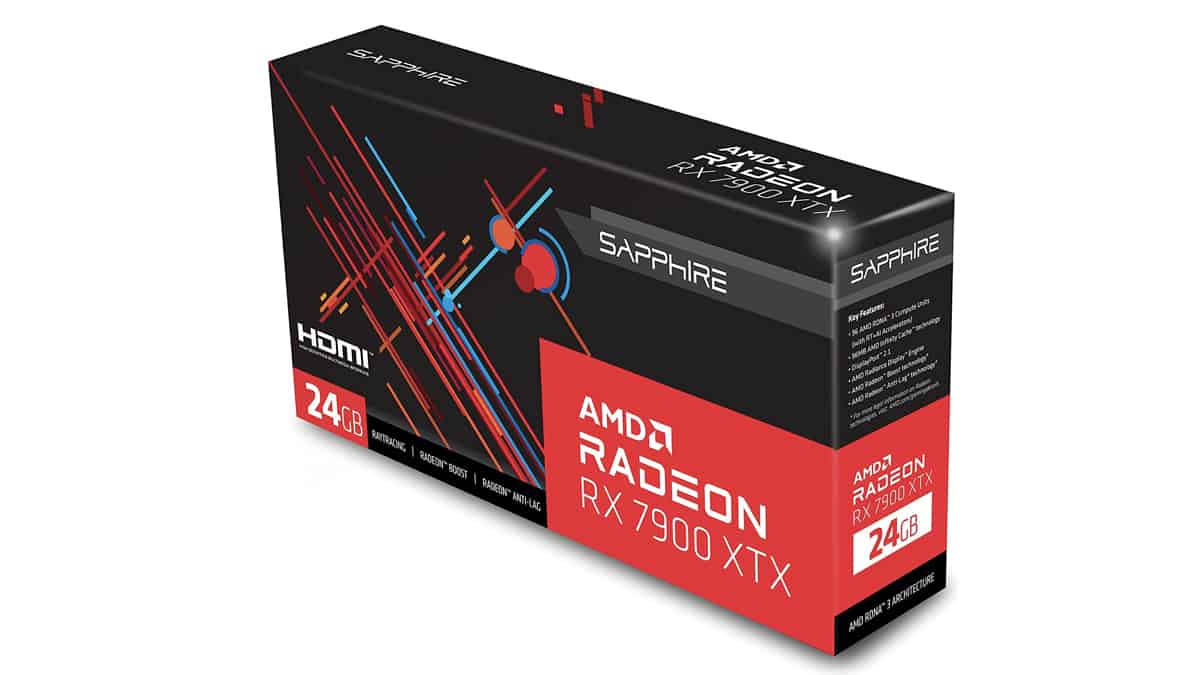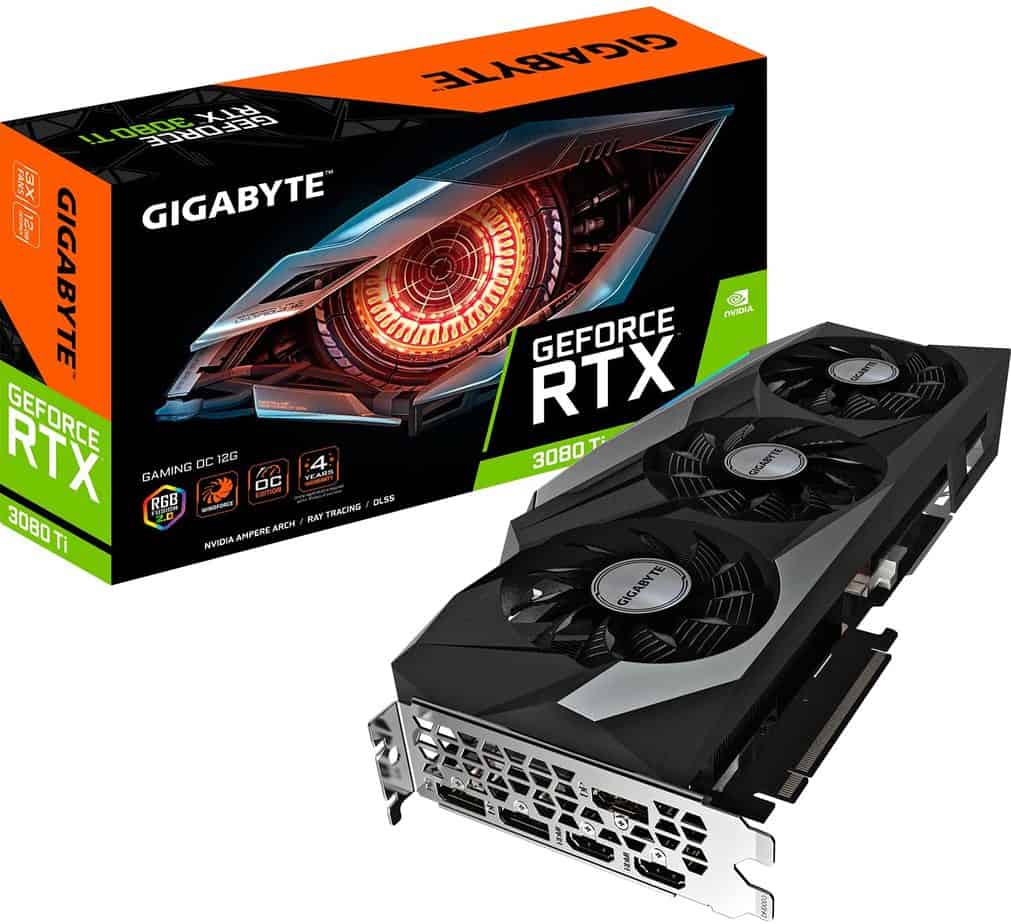RX 7900 XTX vs RTX 3080 Ti

Table of Contents
AMD didn't think twice when it was releasing the 7000 series: It aimed to sweep the floor with Nvidia's GPUs. Although we know that the RTX 4090 is far away from any competition, the RX 7900 XTX is a solid second. In this post, we will compare the 7900 XTX with one of the strongest 30-series Nvidia GPUs, the 3090 Ti. To give a glimpse of how much of an advantage AMD has today over previous generations, the RX 7900 XTX vs RTX 3080 Ti debate should be illumination enough.
One of the main differences to pinpoint is architecture. With RDNA 3 and Navi 31, AMD features a chiplet architecture, which separates memory and cache from the rest of the GPU functionality, potentially reducing costs for AMD and allowing for higher-performance future designs.
RX 7900 XTX vs RTX 3080 Ti: Specs
The first difference to tackle in this comparison is the memory size. The RX 7900 XTX has a memory size of 24 GB, while the 3080 Ti has 12 GB. This characteristic gives the AMD GPU a big advantage in demanding professional environments.
We've got to make clear that the two GPUs come from very different generations. The jump AMD provides from the 6000 to the 7000 series closed a lot of gaps and showed major improvements over the past iterations. One of those improvements is its L3 cache. AMD is not afraid of making its statement whenever it can. So, it packed the 7900 XTX with 96MB of L3 cache, an amount the 3080 Ti can't even dream about.
| RX 7900 XTX | RTX 3080 Ti | |
| Memory size | 24 GB GDDR6 | 12 GB GDDR6X |
| Memory bus | 384 bit | 384 bit |
| Bandwidth | 960.0 GB/s | 912.4 GB/s |
| Base Clock speed | 1855 MHz | 1365 MHz |
| Boost clock speed | 2499 MHz | 1665 MHz |
| Higher floating-point performance | 61 TFLOPS | 36.86 TFLOPS |
| L3 Cache | 96 MB | – |
| TDP | 355 W | 350 W |
| MSRP | 999 USD | 1,199 USD |
As we can see in the table above, the 7900 XTX also has faster frequencies. More interesting is how they manage to get there without rising the TDP all too much. The XTX reaches 2499 MHz of boosted clock speed while the 3080 Ti only gets up to 1665 MHz, not even reaching the base clock speed of the 7900 XTX. Amazingly, the AMD contender only has a 5W higher TDP than Nvidia's: 355W vs 350W.
Thanks to the previous improvements, AMD improves the floating-point performance of the 7900 XTX up to 61 TFLOPS, twice the speed of the 36.86 TFLOPS of the 3080 Ti. If we translate this to gaming or productivity. the gains are amazing. The capacity of the 7900 XTX to run 4K games and demanding rendering is better than ever before.
RX 7900 XTX vs RTX 3080 Ti: Price
Nvidia does what it does regarding prices. It sees the Ti version of its GPUs as the perfect opportunity to get lots of sales without really investing that much in wide improvements. The RTX 3080 Ti was released with an MSRP of $1,199 USD and this was not even the best Nvidia 30-series GPU.
On the other side, the AMD flagship GPU was released at $999 USD, $200 cheaper than the 3080 Ti. If we balance specs, performance, and price, the 7900 XTX has a way higher and better price-to-performance ratio.
RX 7900 XTX vs RTX 3080 Ti: Performance
The RX 7900 XTX and the RTX 3080 Ti are both high-performance graphics cards, but the RX 7900 XTX has a significant advantage in terms of floating-point performance, with 61 TFLOPS compared to 36.86 TFLOPS for the RTX 3080 Ti. The RX 7900 XTX also has a larger L3 cache of 96 MB, which can help with performance in certain workloads.
On the other hand, the RTX 3080 Ti has 12 GB of faster GDDR6X memory, which can result in higher memory bandwidth and potentially better performance in certain situations. Additionally, the RTX 3080 Ti is equipped with ray tracing capabilities, which the RX 7900 XTX doesn’t have.
This last distinction gives the 3080 Ti a good starting point performance-wise and was exactly what helped Nvidia grab the podium in the gaming field regarding the previous generation. However, AMD’s amazing rasterization performance helps them close the gap, putting any doubt behind them. Now, due to pure raw power, the 7900 XTX can perform better in games and content creation even when we consider raytracing and DLSS.
Unfortunately, this is only true against the previous generations. The RTX 4080 is so strong that it can still beat AMD once this technology gets consideration.
Final thoughts
In conclusion, the RX 7900 XTX has a clear advantage in terms of floating-point performance, L3 cache, and overall performance. With 61 TFLOPS of floating-point performance and 96 MB of L3 cache, the RX 7900 XTX is capable of handling demanding workloads with ease.
On the other hand, the RTX 3080 Ti has 12 GB of faster GDDR6X memory and ray tracing capabilities, which can result in higher memory bandwidth and potentially better performance in certain situations. The RTX 3080 Ti is a good choice for those who are looking for a card with ray-tracing capabilities and high memory bandwidth but for overall performance and power, the RX 7900 XTX is the way to go.


